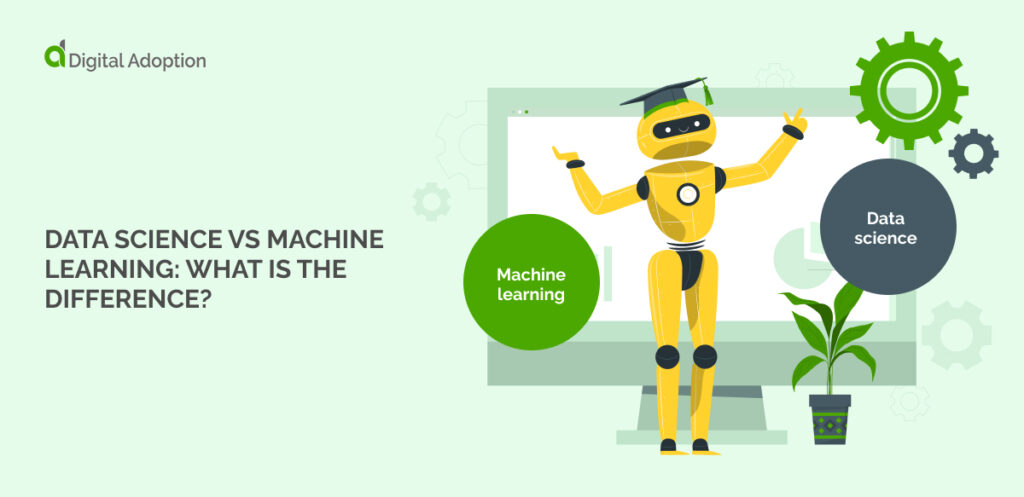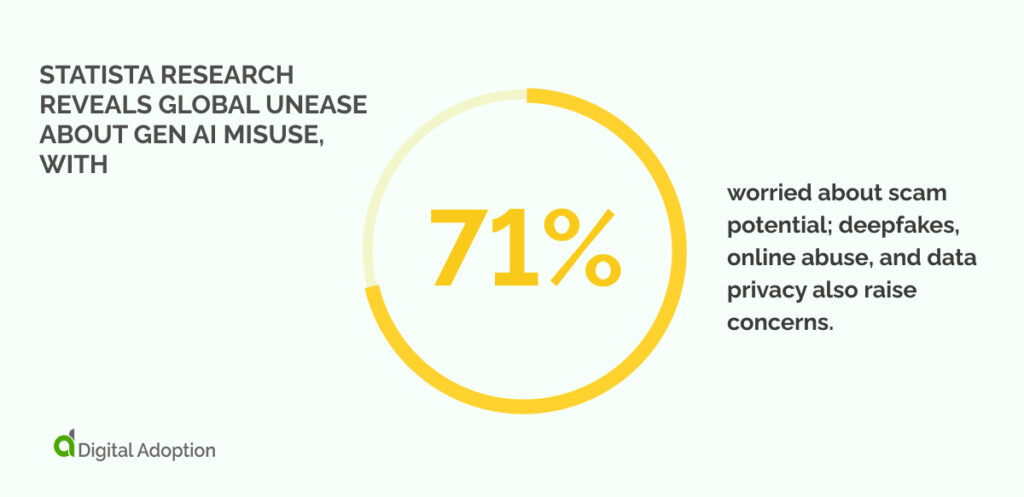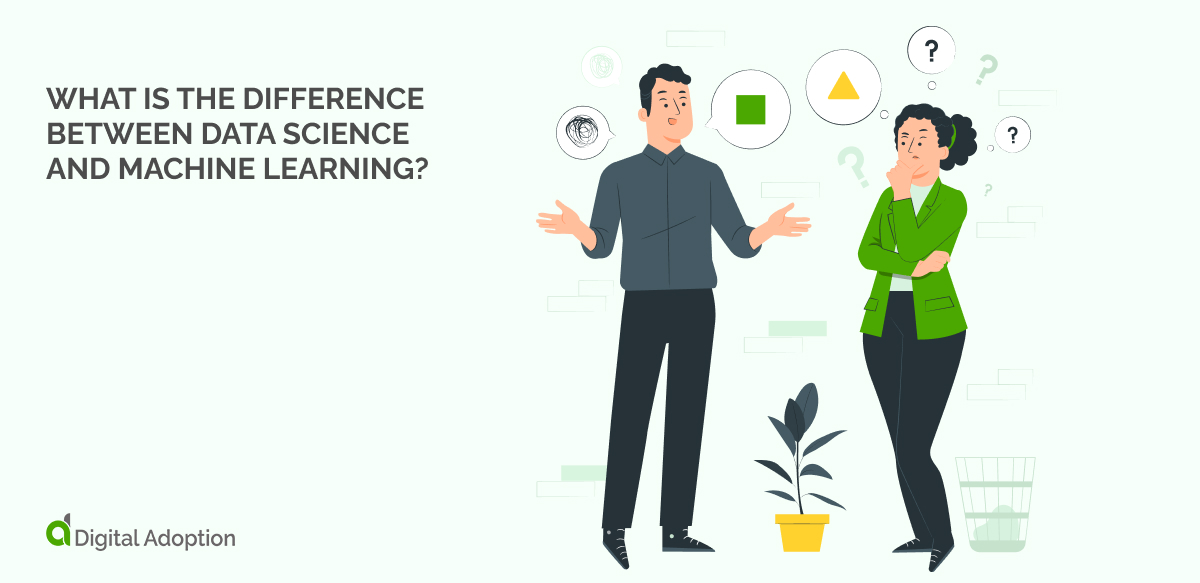Confusion arises when distinguishing between data science and machine learning. This is often due to their interchangeable use in discussions.
Individuals struggle to pinpoint the differences and understand how each contributes to data-driven initiatives. This lack of clarity hinders the effective deployment of these technologies within organizations. It can lead to sub-optimal resource utilization and missed opportunities for innovation.
Therefore, addressing confusion and explaining the distinctions between data science and machine learning is essential. It allows businesses to decide which approach best suits their needs. It also helps companies to integrate digital tools to maximize their impact on business outcomes.
This article will define data science and machine learning and examine their differences. We’ll also explore how these technologies complement each other and achieve results when used together.
What is data science?
Data science is a field that uses scientific methods, algorithms, and systems to extract insights and knowledge. It utilizes both structured and unstructured data. The goal is to uncover patterns, trends, and correlations that can inform strategic business decisions.
Data analytics officers use statistics, machine learning, and programming to analyze large datasets. They can then glean and derive actionable insights. They transform raw data into understandable and valuable information using data mining, predictive modeling, and visualization techniques.
Data empowers smarter decisions, leaner operations, and a market advantage. As data science evolves, its application across various sectors—from healthcare to banking—continues to drive innovation andefficiency.
What is machine learning (ML)?
Machine learning (ML) is a branch of artificial intelligence (AI) in which computers leverage data to learn patterns and perform actions without explicit programming. It involves algorithms that enable systems to improve task performance through experience. ML powers applications like recommendation systems, image and speech recognition, and autonomous vehicles.
Key techniques include supervised learning (using labeled data) and unsupervised learning (finding patterns in unlabeled data). Reinforcement learning (learning through trial and error) is also included.
What is the difference between data science and machine learning? (Chart)

Let’s look at the chart below to understand the differences between data science and machine learning.
We break down these distinctions across several key specifications. This will give readers a diverse understanding of their respective scope and capabilities.
| Key specifications | Data Science | Machine Learning |
| Focus | Data scientists extract insights from structured and unstructured data to support decision-making and solve business problems. They utilize statistical analysis, data mining, and machine learning techniques. | Algorithms learn from data to make predictions or decisions without being explicitly programmed. This field focuses on developing and deploying models that improve with experience. |
| Objective | Data scientists aim to uncover patterns, trends, and insights from data to inform strategic decisions and operational improvements in various domains such as marketing, finance, and healthcare. | Machine learning aims to automate decision-making processes and predictions by learning patterns and relationships from data. It seeks to develop models that can generalize from data and make accurate predictions on new, unseen data. |
| Techniques | Techniques for deriving insights from data include statistical analysis, data mining, exploratory data analysis, and visualization. Data scientists may also use advanced analytics like predictive modeling and text mining. | Core techniques involve regression (predicting continuous values), classification (assigning labels to data), clustering (grouping similar data points), and reinforcement learning (learning through trial and error). Depending on available labeled data, machine learning algorithms can be supervised, unsupervised, or semi-supervised. |
| Application | Applications range from business intelligence, customer segmentation, and market analysis to fraud detection, sentiment analysis, and recommendation systems. Data science is crucial in optimizing processes and improving decision-making across industries. | Widely used in natural language processing (NLP) for text analysis, computer vision for image recognition, and speech recognition. Applications include autonomous vehicles, personalized medicine, and recommendation engines in eCommerce. |
| Tools | Common tools and languages include Python, R, SQL, and various libraries for data manipulation (Pandas), visualization (Matplotlib, Seaborn), and machine learning (Scikit-Learn, TensorFlow, PyTorch). Data scientists also leverage big data platforms like Hadoop and Spark to handle large-scale datasets. | TensorFlow and PyTorch are popular frameworks and libraries for building and deploying machine learning models. Scikit-Learn is widely used for traditional machine learning algorithms, while Deep Learning frameworks like Keras provide higher-level abstractions for building neural networks. |
| Process | Involves data collection from multiple sources, data cleaning, preprocessing, exploratory data analysis (EDA), feature engineering, model selection, training, evaluation, and deployment. Data scientists emphasize interpretability and understanding of data-driven insights. | Focuses on training models on labeled data (supervised learning) or identifying patterns in data (unsupervised learning). Includes iterative processes of model training, hyperparameter tuning, cross-validation, and model evaluation to improve predictive performance. Emphasizes generalization to new data and scalability. |
| Output | Outputs actionable insights through reports, dashboards, visualizations, and data-driven recommendations. Data science outputs help stakeholders understand trends and make informed decisions. | Outputs predictive models, classifications, clustering results, and recommendations. Machine learning outputs enable automated decision-making and predictions in real-time applications. Models continuously learn from new data to improve performance and adapt to changing conditions. |
Examples of how data science and machine learning work together
According to a report by McKinsey, companies that leverage data science and ML effectively can increase their operating margins by up to 60%.
Both data science and machine learning disciplines intertwine to extract value from data. But how exactly does this work?
Below, we explore a few examples of how data science and machine learning work together. These examples include various industry use cases that demonstrate the diverse power of these technologies when combined.
Predictive maintenance in the energy sector
Data science and ML are expediting predictive maintenance in the energy sector.
Data scientists can unearth potential equipment failures. This is done by analyzing historical data like temperature, vibration, and usage patterns. Machine learning algorithms take this data and predict when maintenance is necessary. This optimization leads to more equipment uptime and reduces the cost of downtime.
Improved operational strengths extend the lifespan of infrastructure. This transforms traditional maintenance practices into a predictive and cost-effective strategy.
Personalized eCommerce recommendations
In eCommerce, data science and machine learning enhance customer experience through expert recommendations.
Data scientists mine customer details like purchases and browsing to find patterns. Machine learning uses this data to recommend products, predict future buys, and refine marketing. This boosts satisfaction with relevant suggestions, leading to more sales and loyal customers. Data science personalizes shopping, driving customer happiness and business growth. By analyzing behavior, businesses can target recommendations and strategies.
Fraud detection in telecommunications
In telecommunications, data science, and machine learning are helping combat fraud.
Telecom companies use data science to fight fraud. They analyze call records, usage patterns, and network behavior for anomalies. Machine learning algorithms constantly improve at detecting new fraud tactics. This allows them to stop fraud and protect customers quickly. It also helps maintain a secure and reliable network.
Natural Language Processing (NLP) for customer support
In customer support, data science utilizes advanced NLP techniques. These methods analyze diverse customer queries and sentiments. They can also analyze feedback from channels like chatbots and emails.
These techniques enable a precise understanding of customer needs and sentiments in real-time. Machine learning algorithms then process this analyzed data to automate contextually relevant responses. This ensures prompt and effective customer interaction. Issues requiring human intervention are promptly escalated. This streamlines support processes and enhances overall service efficiency and satisfaction.
Traffic prediction and optimization in Smart cities
Data science and ML can predict traffic patterns and improve transportation systems in Smart cities.
Traffic data, weather conditions, and local events are all assessed to form a picture. These factors are studied to forecast traffic congestion and peak times. ML models ingest this data to suggest alternative routes, adjust traffic signals, and change real-time public transport schedules. This reduces commute times, minimizes congestion, and enhances overall transportation efficiency. Through this, sustainable urban development and improved quality of life are possible.
Data science and machine learning going forward
As data science progresses, shaping solutions across diverse fields will likely involve ML.
Data science serves as the bedrock. Using statistical analysis, predictive modeling, and advanced analytics backed by data. These insights fuel ML algorithms, enabling them to learn patterns, make predictions, and automate decisions.
However, the rising popularity of AI technologies invokes ethical concerns. These include bias, errors, and accountability. ML algorithms trained on biased datasets can perpetuate disparities. At the same time, algorithmic mistakes may lead to flawed decisions with significant consequences.

Looking ahead, there is a pressing need to prioritize responsible AI solutions. This involves interdisciplinary collaboration among data scientists, ML engineers, ethicists, and policymakers. Together, they can establish rigorous guidelines for ethical AI development and deployment.
Responsible AI deployment means emphasizing principles of fairness, privacy protection, and societal impacts. It necessitates that robust governance frameworks be put in place. This will ensure transparency, trust, and ethical integrity throughout the AI lifecycle.









